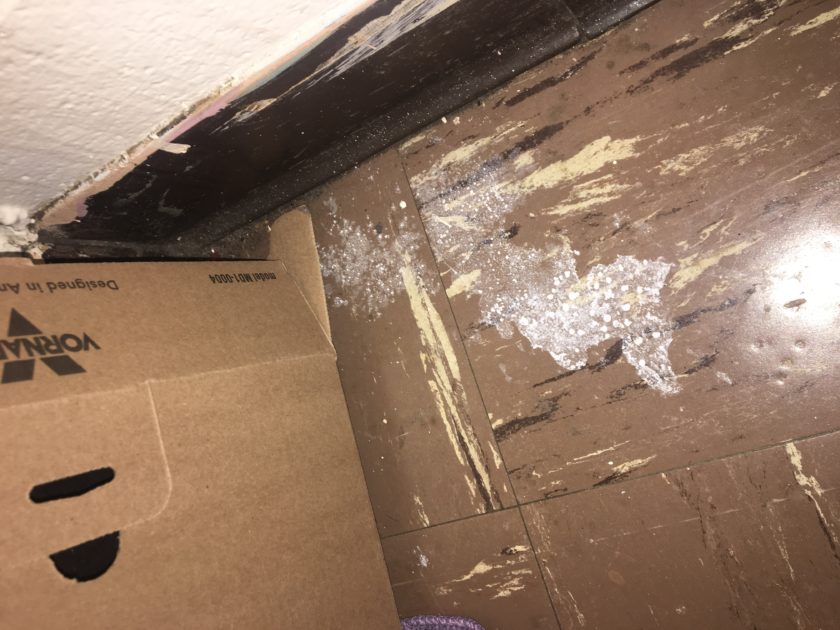Reports of mold and mildew have been circulating around campus.
Alerie Martin, first-year, said she had to move out of her room in Lohman because of some fungus found to be growing on her floor during move-in day.

“I left Lohman because of health issues that I believed to be caused from the living environment,” Martin said.
Martin lived on the first floor of Lohman, and moved out of the building about 3 weeks ago.
“In my time of living at Lohman, I encountered so many health issues that I had to visit urgent care multiple times, and was eventually required to move on doctor’s orders,” Martin said.
According to Martin, mold and mildew could be found in the corners of her room. Inside of the bathroom, it was on the windows and showers.
A picture was also provided as evidence.

The powdery texture of the white patch in the photo is a common characteristic of mildew, a type of fungus known to grow in locations with a lot of moisture.
Last year, Schaaf and Cotterman were notorious for having outbreaks of mold, another type of fungus. One common location for the mold in Schaaf were the A/C units, addressed in a previous article by the Chimes.
While mold and mildew seem to be interchangeable terms, there’s actually a core difference.
Mildew has a white color, while mold is commonly seen as green and black.
Mold can easily grow in wet locations with high humidity levels. That’s why mold eventually develops on shower curtains that are not replaced or cleaned.

According to the CDC, some people can be around fungi and not be affected at all, while others run the risk of having serious reactions to them.
These reactions can include, “nasal stuffiness, throat irritation, coughing or wheezing, eye irritation, or, in some cases, skin irritation.”
“All reports have been thoroughly followed up on, and there has been no mold found in student rooms,” Jon Geyer, director of Residential and Commuter Life, said. “To ensure the safety of residents, after these concerns were reported, we brought in an external company (Safex) to complete air sampling.”
Founded in 1992, Safex is a local organization that provides health and safety audits for various workplaces.
The university is still awaiting an official final report from Safex, but according to Geyer, all testing so far have come back “negative.”
In an email that was sent out to Lohman residents, the Office of Residential and Commuter Life stated, “The concentrations of the species observed are not considered to be unusual and do not suggest active fungal growth in any of the assessed areas.”
“If students ever have a concern about the possibility of mold or mildew in their space, they should place a work-order and contact facilities,” Geyer said. “All measures will be taken to ensure that any issues are cleaned and treated properly.”
Students living in air-conditioned rooms should open their doors and windows a minimum of 15 minutes per day, which will allow for air circulation that could potentially prevent the growth of fungus.
If you’re a student that has experienced or is currently experiencing this issue, reach out to rcumberlander@capital.edu.


